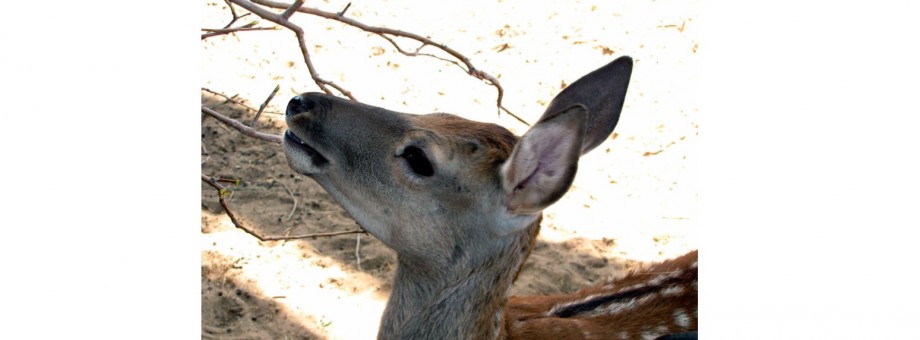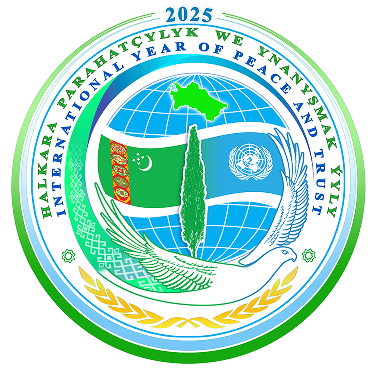VECTORS OF ECOLOGICAL DIPLOMACY: PROTECTION OF BIODIVERSITY

Resolutions on Joining of the country to number of international agreements, which include the Convention on the Conservation of Migratory Species of Wild Animals and Agreement on the Protection of Afro-Eurasian Migratory Wetland Birds, have been adopted at the 10th session of the Mejlis of the 6th convocation on August 22.
We have asked Doctor of Biological Sciences, Professor Eldar Rustamov to comment on this event, which indicates active position of our country in solution of natural conservation issues and promotion of ecological diplomacy:
- Both agreements are aimed at protection of rare species of wild animals, which have not only national but international significance, - E. Rustamov says. – The Convention on the Conservation of Migratory Species of Wild Animals (CMS) or Bonn Convention sets out the objective to protection land or sea migrating animals including birds in all territories where they inhabit or migrate in global scale. This international agreement words under the UN Environment Programme (UNEP). The Convention has been signed in 1979 and entered into force in 1983. As of now, more than 100 countries are the members of the Convention.
- The Agreement on the Protection of Afro-Eurasian Migratory Wetland Birds (AEWA) has been signed in 1999 and worked under the Convention on Conservation of Migrating Species of Wild Animals, however, in 2015, it was allocated into independent International Agreement.
- What has led the joining of our country to these agreements?
- Until joining of Turkmenistan to these documents, we were the members of three International Memorandums under the aegis of the Convention on Migrating Species, namely the Memorandum of Understanding on Measures on Conservation of Siberian Crane from 1998, Memorandum of Understanding on Saiga Conservation, Restoration and Sustainable Use from 2005, Memorandum of Understanding and Action Plan for Bukhara Deer Conservation and Restoration since 2002.
- It is worth to mention that the document has been signed by four Central Asian countries – Kazakhstan, Tajikistan, Turkmenistan and Uzbekistan. Owing to targeted activity of personnel of Amudarya State Natural Reserve, number of Bukhara deer has stabilized.
- How is the situation with animal migration at present time?
- Migration routes of many species of animals, which includes animals included in the Red List of the World Conservation Union and Red Book of Turkmenistan, run across the territory of our country. It includes number of mammals, for example, Caspian seal, all species of ungulates except wild boar, leopard among the predators and many species of bats.
- The Convention on Conservation of Migrating Species of Wild Animals has proposed so-called Central Asian Migrating Mammals Initiative, a strategic document aimed at conservation of migrating species of wild animals and their habitats in our region. Onager, goitered gazelle, argali, Bukhara deer, saiga as well as leopard are among the representatives of Turkmen fauna, which migrations are studied under this initiative.
- The programme provides targeted measures for conservation of these species and their habitats in each country as well as in transboundary aspect. For example, the initiative for organization of special passageways at the borders for saiga, onager and other animals is proposed. Moreover, the situation with migrating hoofed animals and leopard is under attention of Turkmen and foreign experts under joint expeditions with Norwegian Institute for Natural Research (NINA) and Central Asian Desert Initiative (CADI) and the “Irbis” Leopard Conservation Fund.
- What about migrating birds?
- The Agreement on the Protection of Afro-Eurasian Migratory Wetland Birds is not just a legal tool for conservation of booligical diversity but also for sustainable use of wetland birds and habitats in transboundary aspect. Turkmen ornithologists and Royal Society for Protection Birds, UK have made studies on accounting of rare sociable plover in Lebap Region in 2016 – 2017 as well as on such threatened species as white-headed duck and lesser white-fronted goose in Balkan Region, on Caspian coast in 2018 together with experts of AEWA working group.
- How these agreements correlate with other international agreements in protection of biodiversity, which Turkmenistan has joined?
- First of all, it is worth to mention the Convention on Biological Diversity, which our country has signed in 1998 and since 2009, our country is a member of another important international treaty – the Ramsar Convention, under which we take measures aimed at protection water resources in general, wetlands reserves and water birds including species fro the Red Book of Turkmenistan. In this case, the territory of Hazar State Natural Reserve and other main ornithological territories of Turkmenistan, which number has reached 50, are of special significance. It is worth to add that ornithologists make annual registration of number of hibernating water birds and grey cranes.


 NEWS
NEWS